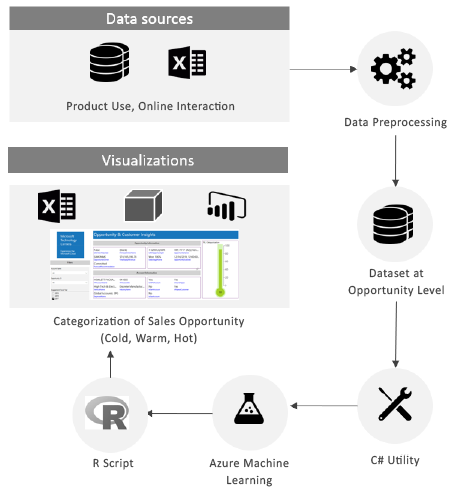Business Case:
Our client sells products and services to 20 million US small businesses. To drive sales, our client conducts in-person workshops, seminars, and webinars to demonstrate its products to potential buyers.
Conducting in-person events is resource- and time-intensive. Traditionally, the audience for events is selected by the local sales team and marketing managers. The recommendations are not always effective and may not meet sales expectations.
To increase the effectiveness of marketing events, our client needed to understand which criteria to consider when inviting event audiences. From the criteria, our client could identify target audiences with high sales potential for the events.
To narrowly select the target audience, we developed a machine learning model that categorizes prospective customers based on past product usage and demographics.
Key Challenges:
- Integrate data from multiple database sources to identify factors that influence customer categorization.
- Use AI to recommend highest sales-potential prospective customers.
- Target customers based on product usage patterns.
Solution:
We used two-class classification algorithms to categorize prospective customers as “hot,” “warm,” or “cold.”
Key Highlights:
- Used R libraries to cleanse and preprocess data.
- Trained data with two-class classification algorithms.
- Created a utility to retrain the ML model based on the latest customer behavioral and demographic information.
- Integrated the ML model output with Power BI.
Figure 1: Customer categorization ML model architecture
We started by collecting customers’ historical data related to product sales, product consumption, and prior marketing engagement. We also collected demographic information about the small businesses. We performed data cleansing and preprocessing activities using R libraries. Next, we identified behavioral and demographics factors exhibited by the highest revenue potential customers.
We then split the preprocessed data into training and testing sets. Using the training data, we evaluated multiple algorithms (Two-Class Logistic Regression, Multiclass Decision Forest, Two-Class Decision Jungle, and Two-Class Decision Forest). Based on evaluation results, we selected the Two-Class Decision Forest algorithm as having the optimum KPI values.
The model was then finalized and deployed as a web service. We used the R feature of SQL 2017 to invoke ML web service. Next, we loaded the predicted output directly into the SQL database and integrated it into Power BI reports.
We created a C# utility to retrain the predicted model and generate the updated prediction output based on the new data flowing into the ML model.
Business Outcome:
Using ML categorization, marketing managers now categorize prospective customers as “hot,” “warm,” or “cold” and focus marketing efforts on the segments that have a high conversion probability.
Outcome Highlights:
- Increased resource utilization and reduced costs by limiting target audience for marketing efforts.
- Identified factors that contribute to highest sales-potential prospective customers.
- Reduced sales expenses by focusing efforts on only high sales-potential prospective customers.

